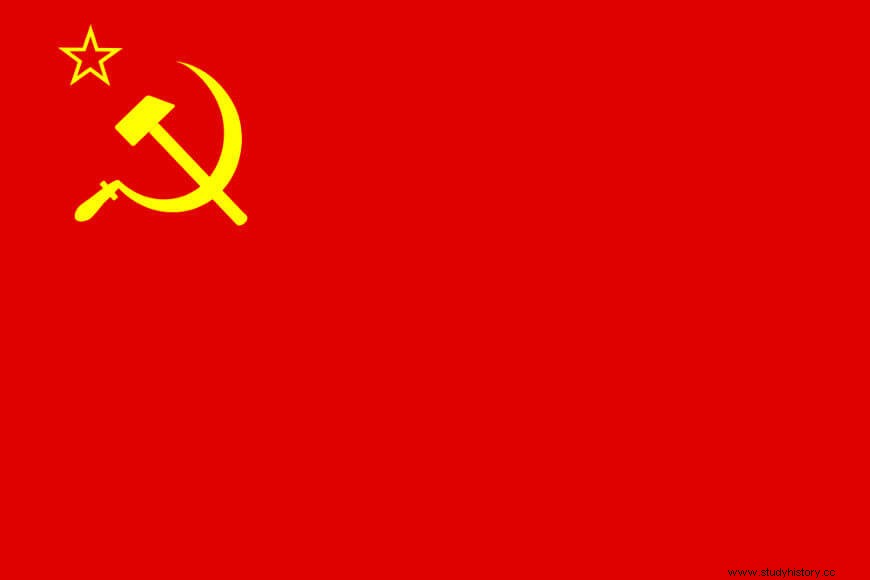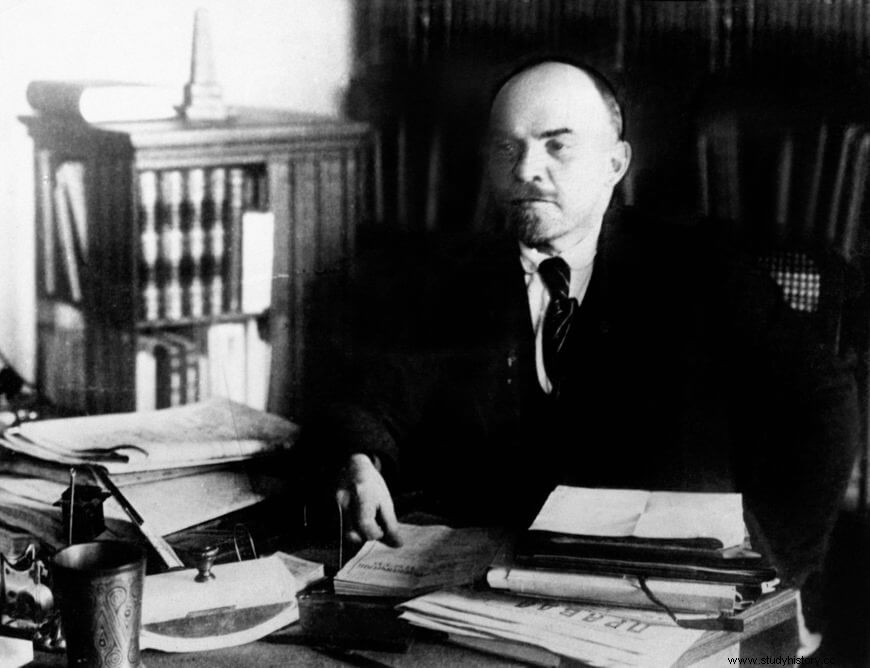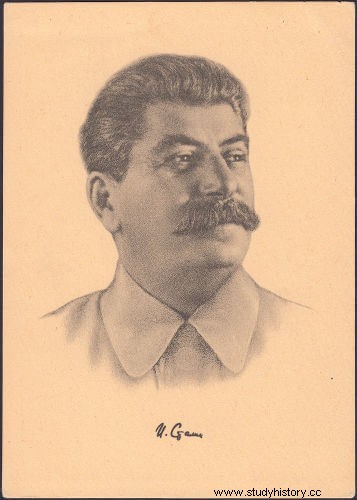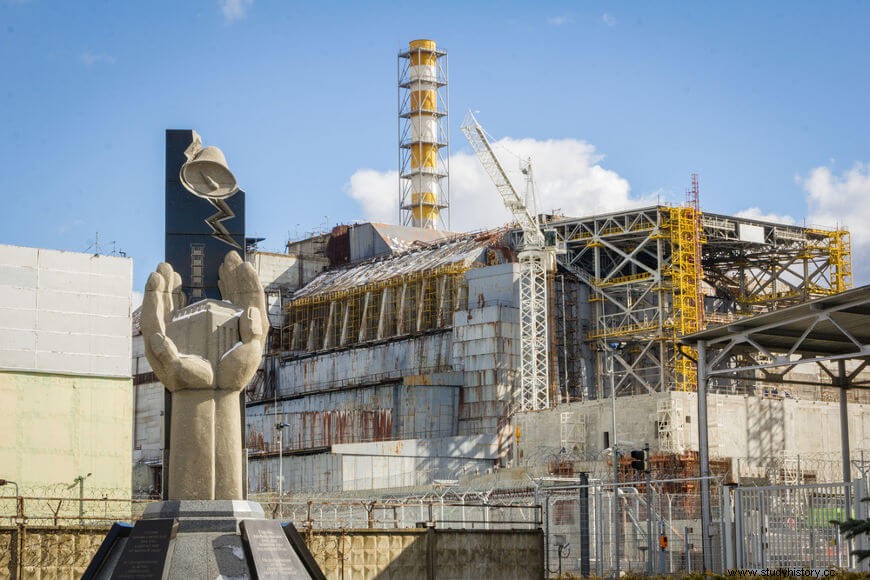
The Union Soviet, or Union das Republics Socialists Soviet (USSR), existed for much of the 20th century, was the largest nation on the planet and was marked by being the great representative of socialist ideology . Its emergence is related to the Revolution of 1917, which transformed Russia into a socialist nation.
The transformations that took place in this country after the revolution led to the emergence of the Soviet Union during the decade of 1920. This set was formed by 15 nations forces, which eventually gained their independence after it was dissolved in 1991. The end of the USSR was responsible for ending the Cold War , political-ideological conflict that marked the second half of the 20th century.
Its ending is also related to the economic crisis that the Union faced from the 1970s onwards. This crisis worsened to such an extent that it led to a political crisis, making the maintenance of the country and the communist bloc under Soviet influence unsustainable. , which collapsed in the late 1980s.
Also visit :Discover the history of the largest Russian city and former Soviet capital
Russian Revolution

The emergence of the Soviet Union is directly linked to the strong>Russian Revolution of 1917 , also known as Revolution from October . This revolution, led by Vladimir Lenin, secured the Bolsheviks' rise to Russian power and was responsible for overthrowing the Provisional Government by Kerensky .
The Provisional Government, in turn, had assumed power from Russia in February of 1917, it was made up of liberals and socialists and had been responsible for overthrowing the Romanov Dynasty of power. Kerensky's overthrow took place by taking over the streets of Petrograd (now St. Petersburg) by the Bolsheviks.
This brought Lenin to power and started the country's transformation to a socialist model. The victory of the communists was the result of the turbulent context that the country lived. Affected by economic inequality fruit of centuries of tsarism and hit by the economic crisis and the war, the revolutionary way out ended up gaining strength in the country.
The implantation of socialism in the country generated an international reaction that started the Russian Civil War . This war was the result of the joining forces of opposition to the newly installed socialist regime. Such a formation was known as the Army White , and was joined by soldiers and foreign funding.
To defend socialism in Russia, the Army was formed Red, and command of that was handed over to one of the leaders of the revolution — Leon Trostky . This war considerably worsened the situation in Russia, as the country had just emerged from three years of conflict in World War I.
In any case, the Red Army managed to emerge victorious after three years of civil war. This victory and the great military mobilization carried out by the Bolsheviks allowed the Russian government to secure control over the interior of the country, in regions that until then could be considered “rebels”. The consolidation of Bolshevik socialism in Russia led to the unification of some nations, and the USSR was formed in 1922.
The Rise of Stalin
Chronologically, from late 1917 to early 1924, power in the Soviet Union was in Lenin's hands. His influence began to deteriorate as his health deteriorated from 1922 onwards as a result of a stroke (leakage). As a result, a dispute over the succession of power was initiated within the government.
Among the names that were in the dispute for power, stand out mainly Leon Trostky and Josef Stalin , although others, such as Nikolai Bukharin , Grigori Zinoviev and Lev Kamenev, have also expressed their intention to take command of the Soviet Union. In the political game, Stalin had more skill, and thus prevailed becoming the leader of the country.
Zinoviev and Kamenev would be removed from the Communist Party and only readmitted in 1928. Trostky was expelled from the party and forced into exile in 1929. The rivalry between Trotsky and Stalin was such that Stalin sent a spy kill the one while in exile in Mexico in 1940. In addition to the power struggle, what was at stake in the rivalry between Trotsky and Stalin were differences ideological on the directions of socialism.
Trostki believed in the international construction of socialism and defended the permanent role of the Soviet Union in the expansion of this ideology throughout Europe, for example. Stalin, on the other hand, believed in the idea of “socialism in one country” and that the Soviet Union should first consolidate socialism internally, and then act on its spread throughout the world.
Also visit :The massacre carried out by the Soviets in Poland in 1940
-
Stalinism
Stalin's rise to power ushered in a period known as Stalinism, agreed between 1924 and 1953 (although some say that Stalin's government began only in 1927). Stalinism became known for being a totalitarian regime whose great symbol was authoritarianism of Stalin and the persecution to the country's oppositions and their execution .
Stalinism, throughout its extension, was marked by the cult to the image of Stalin and the persecution of dissent that resulted in the arrest and death of millions of people. In addition, a process of land collectivization was carried out which also resulted in the death of millions of people from starvation, and the Soviet industry grew rapidly.
The historian Lewis Siegelbaum claims that the industrialization promoted by Stalin during this period was the way he found to guarantee the economic autonomy necessary for the viability of the Soviet Union. |1| The desire to industrialize the country gave birth to the Plans Five-years , economic measures that stipulated the effective action of the State to guarantee a substantial industrialization.
In addition to the massive industrialization of the Soviet Union, Stalinism was marked by the large-scale use of forced labor camps, known as gulags . These places hosted people who were seen as a threat by the government — the former Russian elite, the intelligentsia (intellectual elite) and people who were opposed to some government policies.
Learn more: Nazi concentration camps and forced labor
The persecution of the “opposition” led to deaths of key government officials Soviet and Communist Party. Key members of the Russian army were killed (which left the country lacking competent military commanders), as well as former allies such as Nikolai Bukharin and Leon Trotsky, as quoted.
In agriculture, Stalinism carried out the collectivization of the country's land , a process that basically consisted of transforming all productive lands and the assets that existed on them into state property. The objective was to transfer agricultural production entirely to the hands of the State, and thus guarantee its increase as a way to enable the country's industrialization .
The resistance that this measure generated in medium and large farmers was gigantic, and the government's action was authoritarian. In 1933, for example, some 850,000 people were sent to labor camps.|2| Collectivization also led to deaths, and in the process, millions of people in Ukraine died of starvation in what became known as the Holodomor.
See also: Learn about the term Holocaust, the genocide of around 6 million people
-
World War II
World War II was humanity's greatest conflict and lasted from 1939 to 1945. Despite being outside the conflict from 1939 to 1941, the involvement of the Soviet Union was crucial. for the defeat of Nazism. This conflict became known in the Union as the Great Patriotic War and resulted in the death of approximately 20 million Soviets.
Despite the importance of the Soviet Union in the defeat of Nazism, paradoxically, the Soviets and Germans signed a non-aggression agreement before the war started. Known as Non-Aggression Pact , this was signed a few days before the Germans began their attack on the Poles.
His signature was part of a strategy by the Soviets (but also the Germans) to better prepare themselves when the moment of imminent conflict with the Germans arrived. From this agreement, the Soviets assured the Nazis of the possibility of invading and occupying eastern Polish territory . The Soviet invasion of Poland resulted in a massacre known as the Katyn Massacre , in which 20,000 Poles were executed by the Soviet secret police, the NKVD.
Before getting involved in World War II, the Soviet Union participated in the Battle of Khalkhin Gol and the War from Winter . The first was a battle against Japan, which took place in August 1939, and the second was a war against Finland which took place between 1939 and 1940. The Soviets officially entered World War II when the Nazis invaded the country in 1941.
The invasion of the Soviet Union was part of Operation Barbarossa, and German troops had large targets in Soviet territory. To the north, Leningrad , one of the great industrial centers of the Soviet Union; center, Moscow , the center of government; south, first Kiev , which had control over Soviet grain production, and later Stalingrad , city at the gates of the Caucasus , an important industrial center and close to oil reserves.
The Soviets faced numerous losses in all battles, especially early ones. The Soviet resistance, however, managed to stop the Nazis little by little, and the big turning point took place during the Battle from Stalingrad , between July 1942 and February 1943.
The defeat at Stalingrad destroyed the German armies in the south of the Soviet Union and made it possible for the Red Army to drive the Germans out of Soviet territory. After Kursk, Nazi forces in the Soviet Union were liquidated, and the Soviets were responsible for liberating Eastern Europe from Nazi rule, as well as liberating Germany. The last Soviet battle in Europe happened during the Battle of Berlin and consolidated the Nazi defeat .
Login also :Learn how the Soviets managed to free Budapest from the Nazis
Cold War
The Soviet Union came out of World War II totally destroyed, but from the destruction the country emerged as victorious and went on to occupy the role of power with the United States. Eastern Europe came under direct Soviet influence, leading to the formation of a socialist bloc.
The rivalry between the US and the Soviets and their different ideologies gave rise to a conflict political-ideological known as War Cold, which lasted from 1947 to 1991. To demonstrate its power against the Americans, the Soviets made considerable investments in diverse areas, such as sport, technology, the war industry, etc.
The communist bloc ended up having as a great mark the lack of freedom , and this was evidenced by the interventions of Soviet troops in moments of crisis for the bloc. In 1956, the Soviets intervened in Hungary, and in 1968 they put an end to the Prague Spring. The construction of the Berlin Wall was carried out in 1961, to prevent the East German population from migrating to the western part of Berlin.
Also visit :See why the Berlin Wall was built and the context of its fall
-
USSR after Stalin's death

In the last years of Stalin's rule, the cult of leader gained strength, above all because of the country's victory in the war. However, a stroke eventually led to his death in 1953 . The country was now ruled by a new leader for the first time in nearly 30 years. His death resulted in profound transformations in the Soviet Union.
The succession of power passed to Nikita Khrushchev, and this was responsible for an important event in Soviet history:the de-Stalinization . Khrushchev ends the cult of Stalin that existed in the country based on denunciations of all the crimes that were committed by the former leader throughout his nearly three decades in power.
Subtly and silently, the government began the process of de-Stalinization by removing citations to Stalin in government documents and by not holding traditional commemorations, such as his birthday. In addition, repression measures imposed by Stalin were gradually reversed .
Khrushchev's government also began to rehabilitate people who had been ruled under Stalin, and in the first year alone, about 4620 people had already been rehabilitated.|3| The great moment of de-Stalinization took place at the XX Congress of the Communist Party , in 1956, when Khrushchev denounced several crimes committed by the former leader.
This speech ushered in a sharper phase of de-Stalinization and resulted in the rehabilitation of thousands of people, as well as the reduction of thousands of sentences. By June 1956, more than 50,000 people had been freed and nearly 20,000 had their sentences reduced.|4| Khrushchev also strove to promote further democratization of the Soviet government between 1957 and 1961.
From stagnation to crisis

The crisis in the Soviet Union happened during the 1980s , but before it came stagnation from the 1970s. This one happened during the government of Leonid Brezhnev , leader of the USSR between 1964 and 1982. Brezhnev assumed power after Khrushchev was removed from command by the Communist Party committee, the Politburo .
During Brezhnev's government, the renewal of government cadres came to an end , and this meant that administrative positions were held by people for years. In addition to the aging of government personnel, this lack of administrative renewal resulted in a fall in productivity and contributed to the growth of corruption .
In economics, Brezhnev was a failure and the Soviet economy weakened considerably. GDP growth slowed, the amount of labor was reduced and the quality of life began to decline. Mismanagement led to a supply crisis caused by poor agriculture, and Soviet industry stopped growing.
This situation has been masked on account of the increase in the price of oil and gold in the international market. As a result, the amount of money that the state was able to raise remained high and prevented the necessary economic reforms from being carried out. With that, the lack of food, for example, was compensated by the importation of millions of tons of grains.
Two landmark events contributed to the further erosion of the Soviet economy:the Afghan War of 1979 and the Chernobyl nuclear accident .
The first one started in 1979, when the Soviets decided to invade Afghanistan to support the communist government that existed in that country. Involvement in this war cost the Soviets billions and had a tragic end, as they were forced to leave the country. The second event took place in 1986, when a nuclear power plant exploded in Pripyat, a city in northern Ukraine. The amount of resources to prevent this accident from resulting in greater damage was enormous.
Gorbachev's Reforms
Mikhail Gorbachev assumed command of the Soviet Union in 1985, in the midst of a massive institutional crisis. He believed that the need for reforms was urgent and therefore proposed carrying out two reforms known as glasnot (political transparency) and perestroika (economic reconstruction).
glasnot advocated political openness with an emphasis on combating authoritarianism and promoting more freedom in the country. Perestroika, on the other hand, aimed at reformulating the country's economy, with less involvement of the State in the economy , and the encouragement of private investments in the Soviet economy.
How did the USSR end?
As mentioned, the situation in the Soviet Union under Gorbachev was chaotic, and the reforms did not pay off, especially in the economy. The result was that the crisis in the economy resulted in a crisis policy which encouraged the development of movements from self-determination .
The more conservative wing of the Communist Party was not satisfied with the economic opening of the country and began to conspire against Gorbachev, to harden the regime again. In August 1991, a coup was carried out military , but this failed, and Gorbachev remained as Soviet ruler.
Between 1990 and 1991, self-determination movements gained strength, and this caused some of the Soviet nations to declare their independence. The unsustainable situation led Gorbachev to resign on December 25, 1991, the day after the Soviet Union dissolved, and thus 15 new independent nations emerged.
Which countries were part of the USSR and who ruled it?
The USSR existed from 1922 to 1991 and was formed by these 15 different nations :
-
Russia
-
Ukraine
-
Belarus
-
Estonia
-
Latvia
-
Lithuania
-
Armenia
-
Georgia
-
Moldova
-
Azerbaijan
-
Kazakhstan
-
Tajikistan
-
Kyrgyzstan
-
Turkmenistan
-
Uzbekistan
In addition, the Soviet Union, throughout its seven decades, was ruled by the following people:
-
Vladimir Lenin (1917-1924)
-
Josef Stalin (1924-1953)
-
Nikita Khrushchev (1953-1964)
-
Leonid Brezhnev (1964-1982)
-
Yuri Andropov (1982-1984)
-
Konstantin Chernenko (1984-1985)
-
Mikhail Gorbachev (1985-1991)
Learn more: Communism in China
Notes
|1| SIEGELBAUM, Lewis. The construction of Stalinism. In.:FREEZE, Gregory L. (org.). Russian history. Lisbon:Editions 70, 2017, p. 364.
|2| Ditto, p. 371.
|3| FREEZE, Gregory L. From Stalinism to Stagnation. n.:FREEZE, Gregory L. (org.). Russian history. Lisbon:Editions 70, 2017, p. 434.
|4| Ditto, p. 436.
*Image credits:bissig and Shutterstock
**Image Credits:Eight Photo and Shutterstock
